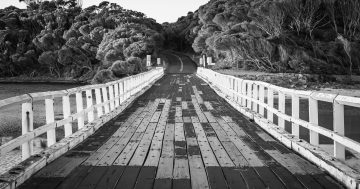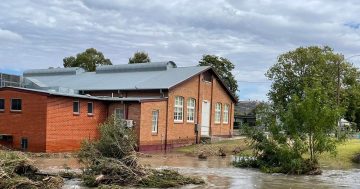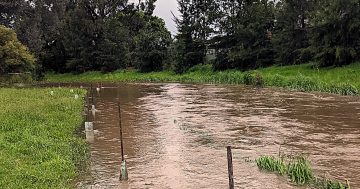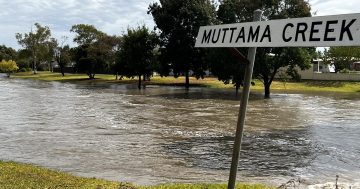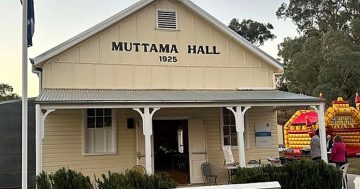
The timber viaduct that forms part of Gundagai’s historic Prince Alfred Bridge will be demolished later this year. Photo: Supplied.
The passing of time has hit at the heart of the Gundagai community which in coming months will see their magnificent town centrepiece – Prince Alfred Bridge timber viaduct – demolished.
It was with an air of resignation that Cootamundra-Gundagai Mayor Abb McAllister confirmed the news the hand-hewn timber structure – once part of the longest regional bridge in NSW – had seen better days.
“Unfortunately the majority of people in the town realise the timber section of the bridge has run its race,” he said.
“It’s just falling down in slabs now – not just a bit off the side – the timber is falling down between spans and it’s become quite dangerous.”
Once a part of any motorist’s adventure north or south along the Hume Highway – the 152-year-old bridge is embedded in the minds of many who clattered along its 922 metres over the town’s floodplain, or common, which was not an ideal place to be when the Murrumbidgee River flooded.
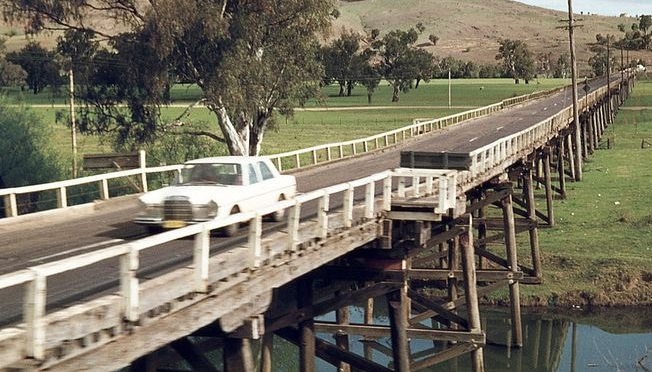
In its heyday, the journey over the Prince Alfred Bridge was viewed as a highlight of the journey down the Hume Highway. Photo: Supplied.
It may have survived floods and flows of traffic but once deposed in 1977 in favour of the new concrete Sheahan Bridge – constructed over the Murrumbidgee as part of a Hume Highway realignment around Gundagai – Prince Alfred Bridge enjoyed its final years of retirement providing local passage to the community.
The southern end of the bridge – the first iron truss bridge in Australia – remains in service today, while the 715-metre timber road viaduct to the north has been closed to traffic since 1984.
The death knell sounded in May this year when two spans of the wooden viaduct over Oibell Drive and Landon Street were demolished due to safety concerns.
By August, the heavy rain in the area over winter – increasing the weight of bridge timber due to moisture retention – was considered the culprit when the southern end of the bridge fell.
With further risk of other sections of the bridge also failing, including the potential for a significant collapse if there is a flood across the floodplain, fencing has already been erected in order to protect the community.
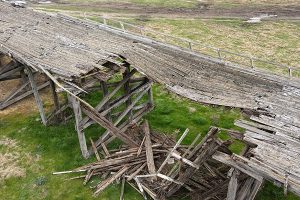
Economically unviable to restore or rebuild, the timber viaduct at Gundagai will now be demolished. Photo: Supplied.
“I think people understand it’s unsalvageable,” Abb said.
He said he can recall meetings where the community campaigned for it to be retained and preserved back in the eighties.
“I think it was good we were able to get another 40 years out of it,” he said.
“It’s a great landmark but unfortunately it’s not like the dog (Dog on the Tuckerbox) – that can be there forever,” he said.
“It’s just one of these things we all go through at the end of the day – age gets us.”
“It’s like losing a member of the family but I think everyone has accepted it’s time and we’re now in the process of trying to work out ways to honour it.”
Abb can recall when he worked for the local council he was one of the honoured few to traverse the timber sealing tar atop a rubber-tyred roller.
“It was the last time we sealed0 it, I think in the mid-1970s,” he said.
The timber viaduct will remain part of Gundagai’s future with parts of the demolished structure to be restored for use in the town.
“We’re looking at ways to memorialise the bridge, with steel spans on either side of the viaduct with viewing platforms, and possibly constructing a park beneath southern end,” he said.
He says this will work well with the Cootamundra-Gundagai Council this week approving an application for $1.055 million in funding to help finance the Old Gundagai Plan – a blueprint embracing the town’s heritage and history through walking tracks, signage and a floating pontoon.
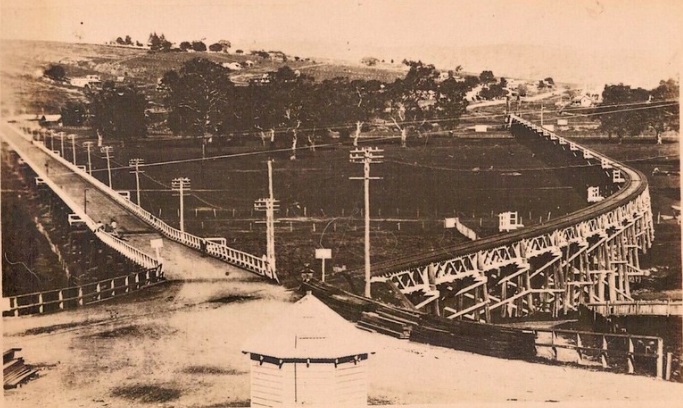
The two historic bridges of Gundagai spanned the Murrumbidgee floodplain to allow safe passage for locals and travellers. Photo: Supplied.
He’s encouraging the community to have their say through a survey into how they would like to see the timber road viaduct celebrated now and for future generations.
Available between 24 September and 31 October 2021, people can access the survey by clicking on this link.
Meanwhile, the fate of the town’s 819.4-metre state heritage-listed rail bridge still hangs in the balance.
Built in 1902, the Gundagai Howe timber rail bridge sits parallel to the road bridge and serviced the Tumut area for 82 years.
No longer operational, the future plans for the rail viaduct are uncertain amid local concerns it too will be demolished.










